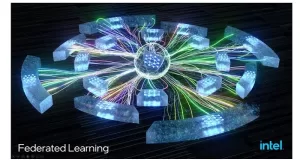Blockchain-Enhanced Federated Learning: Protecting Privacy in the Digital Age

- Federated Learning trains machine learning models on local devices without sharing raw data, enhancing privacy.
- Blockchain provides secure, transparent, and tamper-proof recording of Federated Learning model updates.
- Integrating these technologies improves security, decentralizes trust, and incentivizes participation.
- Real-world applications span healthcare, finance, smart cities, IoT, and retail, despite challenges like scalability and regulatory compliance.
In today’s digital world, data is incredibly valuable. It powers everything from our smartphones to complex financial systems. However, with great data comes great responsibility. Concerns about privacy and security are more pressing than ever. That’s where Federated Learning and Blockchain come into play, offering a way to keep data secure and private while still making use of it for machine learning. Let’s dive into how these two technologies work together to create a more secure and private digital landscape.
What is Federated Learning?
Federated Learning is a way of training machine learning models where the data never leaves your device. Instead of sending raw data to a central server, each device (or client) trains a model locally and only sends the updated parts of the model (known as gradients) back. These updates are then combined to improve the overall model. This means that sensitive data, like personal health records or financial information, stays on your device, reducing the risk of it being exposed.
For example, think about how your smartphone can predict the next word you’re going to type. Federated Learning allows it to learn from your typing habits without ever sending your personal messages to a central server.
The Power of Blockchain
Blockchain is best known for being the technology behind cryptocurrencies like Bitcoin. It’s a way of recording transactions in a secure, transparent, and tamper-proof manner. Each transaction is recorded in a block, and these blocks are linked together in a chain. This makes it nearly impossible to alter any information once it’s been added.
When we combine Blockchain with Federated Learning, we get several important benefits:
- Enhanced Security: Blockchain’s decentralized nature means there’s no single point of failure. Every update in the Federated Learning process is recorded on the blockchain, making it tamper-proof.
- Transparency and Traceability: All updates are visible on the blockchain, providing a clear and auditable trail. This is crucial for industries like healthcare and finance, where compliance and accountability are key.
- Decentralized Trust: Instead of relying on a central server to manage updates, Blockchain distributes this trust across many nodes. This reduces the risk of central points of attack.
- Incentive Mechanisms: Blockchain can use tokens to reward participants for contributing to the model, encouraging more people to take part and provide high-quality data.
How Federated Learning and Blockchain Work Together
Combining these technologies involves a few key steps:
- Model Initialization: A central server creates an initial model and shares it with all participating devices.
- Local Training: Each device trains the model on its local data and creates an update.
- Blockchain Recording: Instead of sending updates directly to the central server, each device sends its update to a blockchain network. This ensures the updates are securely recorded in a decentralized way.
- Consensus Mechanism: Blockchain nodes validate the updates using a consensus protocol. This ensures that only legitimate updates are added to the blockchain.
- Model Aggregation: Once validated, the updates are combined to improve the global model. This can be done by the central server or the blockchain nodes.
- Model Distribution: The improved model is sent back to the devices, and the process starts again.
Enhancing Privacy with Blockchain and Federated Learning
While Federated Learning already helps keep your data private by staying on your device, Blockchain adds even more privacy protections:
- Differential Privacy: This technique adds noise to the model updates before they are sent to the blockchain. This means that even if someone intercepts the updates, they can’t learn anything specific about your data.
- Homomorphic Encryption: This allows updates to be encrypted before being sent to the blockchain. The encrypted updates can be combined without needing to decrypt them first, keeping the data secure.
- Secure Multi-Party Computation (SMPC): This allows multiple parties to work together on a computation without revealing their individual inputs. For Federated Learning, this means updates can be combined securely.
- Zero-Knowledge Proofs (ZKPs): These allow one party to prove to another that a statement is true without revealing any other information. In Federated Learning, this can be used to verify updates without revealing their content.
Real-World Applications
This powerful combination of technologies is already being explored in various fields:
- Healthcare: Hospitals and research institutions can develop predictive models for disease without sharing patient data. Blockchain ensures data integrity and compliance with regulations.
- Finance: Banks can work together on fraud detection or credit scoring models without exposing customer data. Blockchain provides a secure, transparent record of all updates.
- Smart Cities: Data from various sensors can be used to optimize urban services while keeping citizens’ data private. Blockchain ensures the data’s security and reliability.
- IoT (Internet of Things): Devices can use Federated Learning to improve functionalities like predictive maintenance or energy management without sharing raw data. Blockchain adds a layer of security.
- Retail: Companies can collaborate on models for inventory management or personalized marketing without exposing competitive data. Blockchain ensures trust and transparency.
Overcoming Challenges
While the potential is huge, there are still challenges to overcome:
- Scalability: Both Federated Learning and Blockchain can face issues with handling large volumes of data and transactions. Solutions like sharding and off-chain transactions are being explored.
- Communication Overhead: Federated Learning involves a lot of back-and-forth communication. Optimizing this can reduce the burden on networks.
- Interoperability: Different blockchain platforms and federated learning frameworks need to work together seamlessly. Standardization can help with this.
- Security Threats: Even with Blockchain, there are potential threats like 51% attacks. Federated Learning is also vulnerable to poisoning attacks where bad data is introduced. Strong defense mechanisms are needed.
- Regulatory and Ethical Considerations: Compliance with data protection laws and ethical considerations around data usage and consent are crucial.
The Future of Decentralized AI
The combination of Federated Learning and Blockchain is more than just a technological advancement; it’s a step towards a future where data privacy and security are prioritized. This approach ensures that sensitive information remains private, while still leveraging the collective power of data for machine learning. As we continue to refine these technologies and overcome challenges, the possibilities for decentralized, secure, and privacy-preserving AI are endless.
Imagine a world where your health data helps create better treatments without ever leaving your control, or where cities run more efficiently without compromising on privacy. This is the promise of Federated Learning and Blockchain—a future where we can have the best of both worlds: powerful AI and robust data privacy.













